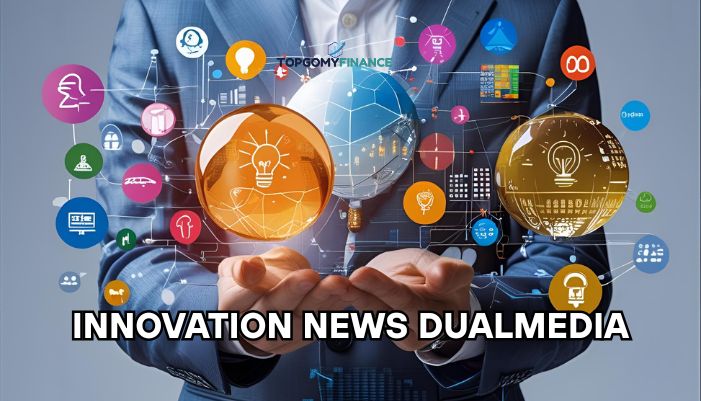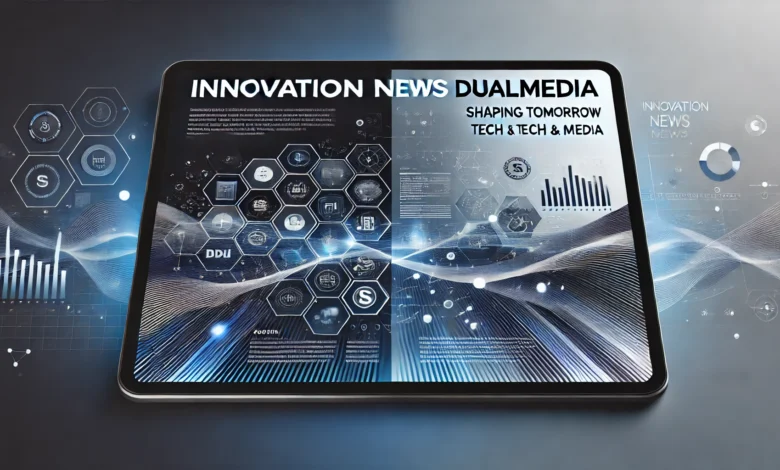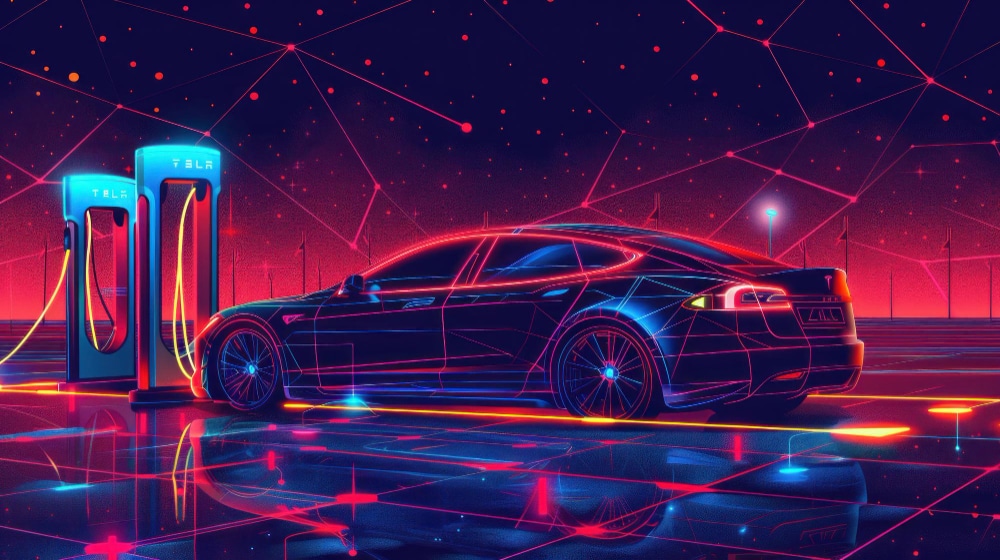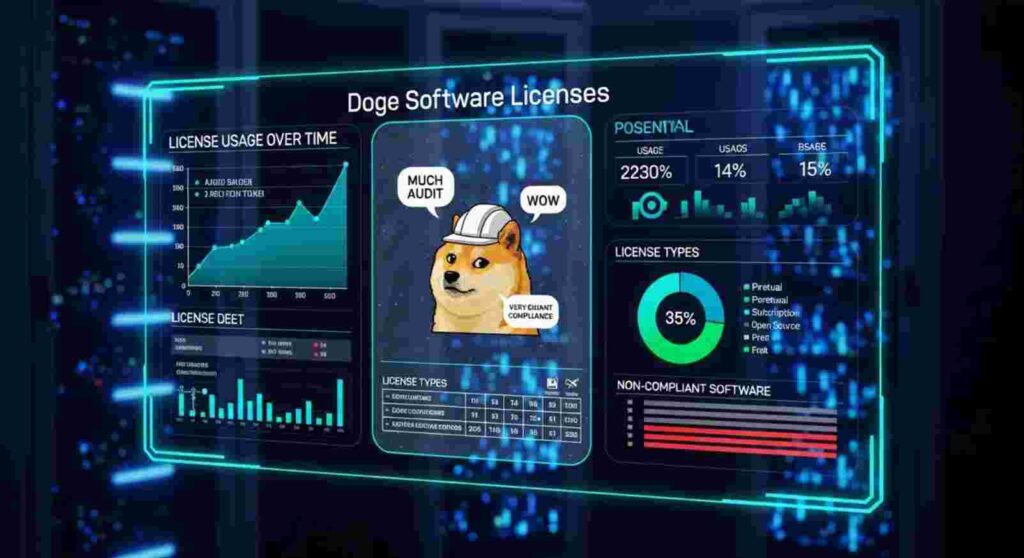The DualMedia Revolution
The landscape of news consumption, particularly within the fast-paced realm of technological innovation, is undergoing a profound and irreversible transformation. For decades, the model was relatively straightforward: a newspaper article, a magazine feature, a television segment. The medium, while evolving, offered a largely monolithic experience. Today, that singular model is shattering, replaced by a more nuanced, sophisticated, and effective approach tailored to the fragmented attention and diverse needs of the modern audience. At the epicenter of this seismic shift is a powerful strategy known as DualMedia. This is not merely a buzzword; it is a fundamental rethinking of how information about breakthroughs, startups, and scientific discoveries is packaged, delivered, and internalized by the public, professionals, and investors alike.
DualMedia operates on a core, seemingly simple premise: there is no one-size-fits-all method for consuming complex information. The executive scrolling through their phone during a commute has different needs and capacities for intake than the research scientist preparing for a deep dive into a new semiconductor material. The traditional media model often forced both audiences to compromise, resulting in content that was either too superficial for the expert or too dense for the casual observer. The DualMedia strategy obliterates this compromise by intentionally creating two distinct, yet intrinsically linked, content experiences from a single news story or investigative piece. It acknowledges that depth and brevity are not opposites but rather two essential sides of the same informational coin.
This approach is uniquely suited to the domain of innovation news. Technological advancements are rarely simple; they are layered with technical specifications, market implications, ethical considerations, and societal impacts. A thirty-second video can brilliantly capture the “what” and the “wow” factor of a new humanoid robot, but it cannot adequately explore the “how” of its actuator technology or the “why” of its ethical governance framework. Conversely, a 5,000-word whitepaper on the same robot is invaluable to an engineer but will never capture the mass audience needed to foster public understanding and discourse. DualMedia serves both masters simultaneously, ensuring that the narrative around innovation is both widely accessible and deeply informative, thus bridging the perilous gap between scientific achievement and public comprehension. The DualMedia Revolution.
Understanding the Core Mechanics of DualMedia in Journalism
To fully appreciate the impact of the DualMedia strategy, one must first dissect its core components. It is not simply repurposing a written article into a video script. It is a deliberate, parallel process of content creation where two formats are conceived together to complement and enhance each other, each playing a specific role in the user’s journey from curiosity to understanding. This methodology represents a significant departure from the traditional “shovelware” approach, where a text article is passively adapted into another format as an afterthought. Instead, DualMedia requires an integrated editorial workflow where writers, video producers, data visualizers, and audio engineers collaborate from the very inception of a story. The DualMedia Revolution.
The first pillar of this strategy is the Short-Form, High-Impact Media component. This is the hook, the gateway drug into the deeper narrative. It is designed for the scroll-happy, attention-starved digital environment. This format typically includes succinct video summaries (under two minutes), dynamic audio clips (like brief podcast snippets), engaging infographics, and visually striking social media posts with bold text overlays. The primary objective here is not to tell the whole story but to tell the most compelling part of it. It answers the fundamental questions: What is this innovation? Why is it significant right now? What is the immediate visual or auditory hook? This content is optimized for platforms like TikTok, Instagram Reels, Twitter, and LinkedIn, where discovery happens and where the battle for initial attention is won or lost.
The second, equally crucial pillar is the Long-Form, Deep-Dive Content. This is the substance, the foundation upon which true understanding is built. If the short-form content is the movie trailer, this is the full-length feature film coupled with the director’s commentary and a detailed making-of documentary. This element encompasses comprehensive written articles, in-depth feature reports, full-length podcast episodes (30-60 minutes), detailed technical analyses, and interactive data visualizations. Here, the journalist has the space to provide context, explore nuances, present conflicting viewpoints, cite sources, and delve into the technicalities that the short-form piece necessarily omitted. This is the content that establishes authority, builds trust, and serves the audience that needs more than just a headline. It is the reward for the engaged user who clicked “Learn More” or decided to listen to the full podcast episode.
The true genius of the DualMedia model lies in the symbiotic relationship between these two pillars. They are connected through deliberate and seamless calls-to-action. A captivating video on YouTube will contain a link in the description to the full written analysis on the website. A provocative social media infographic will direct users to the full podcast interview with the lead scientist. Conversely, the top of a long-form article will often feature an embedded summary video, giving the time-poor reader the immediate gist before they decide to commit to the full text. This creates a virtuous cycle: the short-form content drives massive traffic and broad awareness, while the long-form content converts that casual traffic into a dedicated, loyal audience that values depth and quality, which in turn makes them more likely to engage with and share the short-form content from a source they trust. The DualMedia Revolution.
(Rectangle Picture: A flow chart diagram. It starts with a box labeled “Innovation Story Core.” Two arrows shoot out: one to a box labeled “Short-Form (Video/Audio/Infographic)” with icons for eyes and a lightning bolt, and another to a box labeled “Long-Form (Article/Podcast/Report)” with icons for a brain and a magnifying glass. Both these boxes have arrows pointing to a central box labeled “Audience” which then has arrows circling back to the “Innovation Story Core,” indicating a feedback loop.)
The Critical Role of DualMedia in Democratizing Innovation
One of the most significant societal benefits of the DualMedia approach is its profound ability to democratize complex information. Innovation, particularly in fields like artificial intelligence, biotechnology, and quantum computing, has traditionally been shrouded in a veil of jargon and academic exclusivity. This creates a knowledge gap—a chasm between the “haves” (those with the education and context to understand) and the “have-nots” (the general public). This gap is dangerous; it leads to public mistrust, misguided regulatory policies, and a failure to harness collective intelligence and diverse perspectives. DualMedia acts as a bridge across this chasm, making the once-inaccessible accessible without sacrificing intellectual rigor.
The short-form element serves as a powerful equalizer. A well-produced animated video can explain the principle of CRISPR gene editing using relatable metaphors and compelling visuals, making a previously esoteric concept graspable to a high school student or a professional from a completely different field. This broad accessibility is crucial for fostering a society that is informed and engaged with the technological forces that are shaping its future. It allows everyone, regardless of their technical background, to participate in conversations about the ethics of AI, the promise of renewable energy storage, or the implications of neural implants. This widespread baseline understanding is the first step toward meaningful public discourse and responsible civic engagement with innovation. The DualMedia Revolution.
Meanwhile, the long-form content ensures that this democratization does not come at the cost of dilution. For those who are captivated by the simplified overview and want to learn more, the pathway is clear and readily available. The deep-dive content provides the meaty substance that curious minds, students, investors, and professionals crave. It offers the evidence, the data, the interviews with experts, and the critical analysis that transforms a superficial understanding into a robust one. In this way, DualMedia creates a tiered learning ecosystem. It meets individuals where they are—whether they have 60 seconds or 60 minutes—and provides a clear on-ramp to deeper knowledge. This is the essence of true democratization: not lowering the ceiling of understanding, but rather raising the floor while keeping the ceiling infinitely high for those who wish to reach it The DualMedia Revolution.
This model also empowers a wider range of voices to participate in the innovation ecosystem. A startup with a groundbreaking clean-tech solution may not have the budget for a massive PR campaign, but it can use a DualMedia strategy effectively. A compelling demo video can go viral, attracting investor interest and public support, while a detailed technical whitepaper on their website can provide the serious validation that industry experts need to take notice. This levels the playing field, allowing innovation to be judged more on its merit and less on the marketing budget behind it, ultimately leading to a more vibrant and diverse technological landscape. The DualMedia Revolution.
A Strategic Imperative for Brands and Publications
Adopting a DualMedia strategy is no longer a luxury for entities operating in the innovation space; it is a strategic imperative for survival and growth. For news publications, tech blogs, research institutions, and innovative brands, this approach directly addresses the most critical metrics of digital success: audience engagement, brand authority, and sustainable monetization. The fragmented media consumption habits of today’s audience mean that relying on a single format is akin to fishing in a vast ocean with only one type of bait. You might catch some fish, but you’re missing the overwhelming majority of the school. The DualMedia Revolution
From an audience engagement perspective, DualMedia is unparalleled. It dramatically increases the surface area for discovery. A single investigative piece on a new battery technology can be atomized into a dozen different assets: a YouTube video summary, a Twitter thread with key findings, an Instagram infographic comparing energy density, a LinkedIn article delving into the CEO’s quote, and a full podcast episode interviewing the researchers. Each of these assets operates as a unique entry point, attracting different audience segments from different platforms. This multi-format presence not only maximizes reach but also encourages cross-platform engagement, moving followers from one social channel to a owned property like a website or podcast platform, thereby deepening the relationship.
Furthermore, this strategy is a powerful engine for building unassailable brand authority. In the age of misinformation, being a trusted source is the most valuable currency a media entity can possess. The long-form component of DualMedia is where this trust is forged. By consistently producing well-researched, nuanced, and comprehensive content, a brand signals its expertise and commitment to truth. It shows that it respects its audience’s intelligence and is willing to do the hard work to get the story right. The short-form content, in turn, becomes a trusted signal in the noisy social media feed. When a user sees a video from a publication known for its depth, they are more likely to watch, trust, and share it, because the brand’s authority bleeds into all its output. This creates a halo effect where the credibility of the deep-dive validates the brevity of the summary. The DualMedia Revolution.
Finally, the DualMedia model opens up diverse and resilient monetization avenues. The broad reach of short-form content is perfectly suited for brand awareness campaigns and programmatic advertising, attracting a large volume of eyeballs. The highly engaged, niche audience that consumes the long-form content represents a premium opportunity for targeted advertising, sponsored content (which can be integrated into both formats), and subscription models. People are far more likely to pay for a subscription if they perceive immense value in the deep, exclusive content they cannot get elsewhere. The short-form videos can even be monetized directly through platform ad-share programs like YouTube’s Partner Program. This multi-stream revenue approach makes a media business far more sustainable than one reliant on a single, often volatile, income source.
“The DualMedia strategy is not about creating more content; it’s about creating more right content. It’s the recognition that a complex story demands a complex telling—one that is both a headline and a book, a glance and a gaze. It is, fundamentally, the application of user-centric design to the very craft of journalism itself.” – A renowned Digital Media Strategist. The DualMedia Revolution.
The Technological Enablers Powering the DualMedia Ecosystem
The theoretical framework for DualMedia has existed for some time, but its recent proliferation and refinement are directly tied to a suite of technological advancements that have made its execution both efficient and scalable. The tools available to today’s content creators have dismantled the traditional barriers of cost, complexity, and time that once would have made such a resource-intensive strategy prohibitive for all but the largest newsrooms. We are now in the golden age of accessible content creation technology, which acts as the great enabler for the DualMedia revolution.
First and foremost is the staggering improvement in content creation software. High-quality video editing, once the domain of expensive suites like Avid Media Composer requiring specialized training, is now accessible through intuitive, affordable, and powerful software like Adobe Premiere Pro, Final Cut Pro, and even cloud-based platforms like Descript, which seamlessly blends audio and video editing with transcription. For audio, tools like Riverside.fm facilitate studio-quality remote interviews, capturing separate, high-fidelity tracks for each participant, which is crucial for producing professional podcasts. Graphic design has been democratized by Canva and the Adobe Express suite, allowing journalists and content teams to quickly produce visually engaging social media assets, infographics, and thumbnails without needing a dedicated graphic designer for every single task. The DualMedia Revolution.

Secondly, the hardware barrier to entry has collapsed. A broadcast-quality video segment can be shot on a high-end smartphone like the latest iPhone or Samsung Galaxy. Mirrorless cameras from Sony, Canon, and Panasonic offer cinematic video capabilities at a fraction of the historical cost of professional film gear. Affordable lighting kits and high-quality USB microphones (like those from Blue Yeti or Rode) mean that anyone can set up a professional-looking and sounding studio in their home office. This technological democratization empowers individual journalists and small teams to produce DualMedia content that rivals the production value of large organizations, fostering a more diverse and competitive media landscape. The DualMedia Revolution.
Perhaps the most transformative technological enabler is the rise of Artificial Intelligence and automation. AI is no longer a futuristic concept; it is a practical tool supercharging the DualMedia workflow. AI-powered tools can now automatically transcribe interviews in minutes, saving countless hours of manual labor. This transcription is not only useful for creating written articles but also for quickly pulling quotes to use in social media posts or video captions. Natural Language Processing (NLP) algorithms can analyze a long-form article and suggest key points for a summary video script. AI video editing tools are emerging that can automatically cut together highlights from a longer interview based on text prompts.
Furthermore, AI is instrumental in personalization and distribution. Analytics platforms powered by machine learning can analyze audience behavior to determine which topics perform best as video versus long-form articles, which headlines drive the most clicks, and what the optimal time is to publish on each platform. This data-driven approach allows content creators to refine their DualMedia strategy in real-time, doubling down on what works and abandoning what doesn’t. AI can even help personalize content recommendations, suggesting a user who just watched a short video on quantum computing to dive into the related in-depth podcast episode, creating a seamless and intelligent content journey. The DualMedia Revolution.
(Rectangle Picture: A collage of modern content creation tools. Show a smartphone recording 4K video, a microphone on a boom arm, a laptop screen showing a video editing timeline with multiple tracks, a pop-up ring light, and an icon representing an AI brain with symbols for transcription, automation, and analytics.)
The Ethical Considerations and Challenges of a Dual Media Approach
While the benefits of a DualMedia strategy are immense, its implementation is not without significant ethical challenges and potential pitfalls. The very power of this approach—its ability to simplify, captivate, and persuade—demands a heightened sense of responsibility from creators, editors, and distributors. Navigating this landscape requires a steadfast commitment to ethical journalism principles, as the risks of misrepresentation, sensationalism, and audience manipulation are amplified when a single story is fractured into multiple, differently nuanced formats. The DualMedia Revolution.
The most pervasive risk is the loss of nuance and the drift towards sensationalism. The short-form content, by its very nature, must be bold, attention-grabbing, and simplified. There is a constant gravitational pull towards clickbait headlines and thumbnails that overpromise or misrepresent the more measured findings of the long-form piece. A nuanced academic study with a small but interesting correlation might be distilled into a video titled “SCIENTISTS DISCOVER MIRACLE CURE FOR CANCER!” This creates a dangerous dissonance where the audience that only consumes the short-form content walks away with a fundamentally incorrect understanding, while the careful work of the journalists and scientists in the long-form piece is undermined. The ethical imperative is to ensure that the short-form content, while simple, is never dishonest or misleading. It must be a true reflection of the core findings, not a hyperbolic distortion designed solely for clicks. The DualMedia Revolution.
Another critical challenge is maintaining context and avoiding misinformation. In the race to produce quick, digestible content, crucial context can easily be left on the cutting room floor. A video about the potential of a new AI model might showcase its amazing capabilities but fail to mention its significant limitations, its potential for bias, or the massive computational resources it requires. This creates a false impression of the technology’s readiness and impact. The ethical DualMedia creator must be vigilant about what is omitted. A best practice is to use the short-form content to actively tease the complexities explored in the long-form piece. For example, a video could end with, “But this breakthrough also raises serious ethical questions about data privacy. To understand the full debate, read our deep dive here.” This turns a limitation of the short format into a strength, using it as a gateway to deeper understanding.
Furthermore, the economic pressures of the attention economy can create perverse incentives. The algorithms of platforms like YouTube and TikTok often reward engagement above all else, which can inadvertently favor outrage, controversy, and simplistic narratives over measured, truthful reporting. Publications might feel pressured to make their short-form content more inflammatory than the long-form research justifies to “feed the algorithm.” Resisting this pressure is an ethical necessity. The long-form content must serve as the anchor of truth, the North Star that keeps the entire DualMedia strategy aligned with journalistic integrity. The business model must be built on the value of trusted depth, not just the volume of shallow clicks. The DualMedia Revolution.
Finally, there is the challenge of resource allocation and editorial bias. A DualMedia strategy is resource-intensive. It requires investment in video producers, audio engineers, and graphic designers alongside traditional writers and editors. This can create an internal tension where stories are chosen for their “visual potential” or “viralability” rather than their pure journalistic merit. A critically important but complex policy discussion about innovation regulation might be passed over for a flashy but less significant product launch because the latter lends itself better to a sexy video. Editors must guard against this, ensuring that the editorial calendar is driven by newsworthiness and importance first, and only then by the potential for a compelling DualMedia treatment. The DualMedia Revolution.
The Future Trajectory: Where Does DualMedia Go From Here?
The DualMedia strategy is not a static destination but a dynamic evolution. As technology continues to advance and audience habits shift, the expression and implementation of this approach will become even more sophisticated, immersive, and personalized. The future of DualMedia points towards a more integrated, intelligent, and interactive experience for consumers of innovation news, blurring the lines between content formats and audience participation. The DualMedia Revolution.
The most immediate and impactful evolution will be the deeper and more creative integration of Interactive Elements. The future of long-form content is not just text on a page; it is an immersive digital experience. We can expect to see deep-dive articles transformed into interactive scrollytelling adventures, where users can manipulate 3D models of a new invention, toggle between different data visualizations to explore scenarios, or click on specific parts of an infographic to drill down into more detail. The short-form video will act as the trailer for this interactive experience, showcasing a compelling glimpse of what the user can explore for themselves. This transforms the audience from a passive consumer into an active explorer of information, dramatically enhancing engagement and comprehension. The DualMedia Revolution
Another inevitable development is the rise of Personalized Content Pathways powered by AI. Currently, the DualMedia model offers a binary choice: short or long. In the future, AI will be able to dynamically assemble a custom content journey based on a user’s demonstrated level of knowledge, interest, and available time. For a story on nuclear fusion, a novice might be served a foundational animated video followed by a simplified interactive glossary. An engineer might be served a technical summary video that skips the basics and instead jumps straight to a data-rich interactive chart and a link to the original research paper. The core content assets remain, but AI assembles them on the fly into a unique, personalized narrative for each user, making the consumption of complex innovation news incredibly efficient and effective. The DualMedia Revolution.
Furthermore, we are on the cusp of DualMedia expanding into new technological realms, particularly Spatial Computing and the Metaverse. Imagine putting on a VR headset to watch a short 360-degree video from inside a lab where a breakthrough experiment is taking place. The video then offers a virtual “portal” to step into a full 3D environment where you can explore the technology in detail, reading long-form annotations that float in the space around you, and listening to an audio interview with the lead scientist that spatializes as if they are standing next to you. This would be the ultimate expression of DualMedia, merging the immediate, visceral impact of immersive video with the deep, contextual power of long-form analysis in a single, seamless environment.
Finally, the role of Blockchain and Web3 technologies could introduce new models for verification and monetization. Short-form content could be minted as NFTs to prove provenance and combat deepfakes, while access to premium long-form content could be managed through smart contracts, allowing for micro-transactions and new subscriber models. User engagement with content could be tokenized, creating a new way to reward audiences for their attention and participation. While still emergent, these technologies point to a future where the DualMedia economy is more decentralized, transparent, and directly beneficial to both creators and consumers. The DualMedia Revolution.

(Rectangle Picture: A futuristic concept image showing a person wearing sleek AR glasses. In their field of view, a holographic news video is playing. Next to it, interactive data panels and clickable links to “Read Deep Dive” and “Explore 3D Model” are visible, floating in the air.)
FAQs
Q1: Is DualMedia just a fancy term for reposting an article as a video?
A: Absolutely not. This is a common misconception. Repurposing is a linear process where one format (usually text) is passively adapted into another after the fact. DualMedia is a parallel process where the short-form and long-form content are strategized, created, and designed together from the very beginning. They are two sides of the same coin, each crafted with a specific audience intent and purpose, and they are intricately linked to create a seamless user journey from awareness to deep understanding.
Q2: Doesn’t creating two pieces of content for every story double the work and cost?
A: While it does require more initial investment than a single-format approach, it’s not a simple doubling. The integrated workflow creates efficiencies—the research for the long-form article provides all the material for the short-form script. Interviews are recorded for both audio snippets and transcriptions for text. Furthermore, the return on investment is significantly higher. You are effectively creating multiple entry points to your content, maximizing reach and engagement, which leads to greater audience growth, stronger brand loyalty, and more diverse revenue streams (ads, subscriptions, sponsorships), ultimately making the operation more sustainable.
Q3: How can I ensure my short-form content is ethical and doesn’t become “clickbait”?
A: Maintaining ethics is paramount. The key is to ensure the short-form content is a faithful ambassador for the long-form content. It should accurately represent the core findings and tone of the deeper analysis. Avoid hyperbolic language that the long-form piece doesn’t support. A best practice is to use the short-form video or post to actively acknowledge complexity—phrases like “while the initial results are promising, more research is needed” or “this breakthrough also presents significant challenges, which we explore in detail here” build trust and tease the depth available, without misleading the audience.
Q4: Which format should I create first, the short-form or the long-form content?
A: There is no one right answer, and the order can vary by story. Often, the long-form research and reporting come first, as this provides the factual foundation for everything else. The key insights and quotes from this process are then used to storyboard the short-form piece. However, for a very visual story (e.g., the reveal of a new robot), you might shoot the compelling video footage first and then use that as a hook, while simultaneously writing the detailed article that explains the underlying technology. The process is fluid and iterative, with both formats informing each other throughout production.
Q5: Is the DualMedia strategy only relevant for large media corporations?
A: Not at all. In fact, technological democratization has made it more accessible than ever. A single individual or a small team can use a smartphone to shoot high-quality video, use affordable editing software, and leverage free graphic design tools to execute a powerful DualMedia strategy. The core principle is about mindset and workflow, not budget. For a small startup, this might mean creating a one-minute explainer video for LinkedIn and a detailed blog post for their website. The scale may be different, but the strategic principle of serving different audience needs with different formats remains just as effective.
Conclusion:
The journey through the world of DualMedia reveals a strategy that is far more than a trendy media tactic. It is a comprehensive response to the complexities of the modern information ecosystem. It is a philosophical commitment to meeting the audience where they are, respecting their time and intelligence, and serving their diverse needs with both clarity and depth. In the specific context of innovation news, this approach is not just beneficial; it is essential. The stories being told—of artificial intelligence reshaping humanity, of biotech tackling disease, of climate tech fighting for our planet—are too important to be left to monolithic, one-dimensional storytelling. The DualMedia Revolution.




